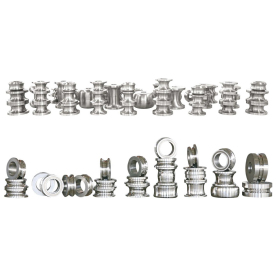In today’s fast-paced industrial environment, the demand for cutting tools that combine durability, precision, and heat resistance has never been greater. One remarkable innovation that has gained traction among manufacturers and craftsmen alike is the heat-resistant High-Speed Steel (HSS) blade. This article will delve into the properties, advantages, and various applications of heat-resistant HSS blades, demonstrating why they are an indispensable tool in numerous industries.
Understanding High-Speed Steel (HSS)
High-speed steel is a type of tool steel that is characterized by its high hardness and ability to withstand high temperatures without losing its temper. This unique property makes HSS blades particularly effective for cutting operations where friction generates a significant amount of heat. Regular steel can easily lose its edge and become dull when subjected to high temperatures, but heat-resistant HSS blades are specifically designed to manage this thermal challenge.
The Advantages of Heat-Resistant HSS Blades
1. **Exceptional Hardness**: One of the primary benefits of heat-resistant HSS blades is their exceptional hardness. HSS is typically hardened using advanced heat treatment processes, allowing the blades to maintain their sharpness longer than traditional cutting tools. This reduces the need for frequent replacements and enhances productivity.
2. **Heat Retention**: As the name suggests, heat-resistant HSS blades excel at withstanding elevated temperatures. They remain effective even when exposed to extreme heat, making them suitable for applications such as high-speed drilling and machining, where friction can quickly elevate the tool’s temperature.
3. **Toughness and Durability**: In addition to being hard, heat-resistant HSS blades are tough and durable. They can resist chipping and breakage, which is crucial in high-impact cutting applications. This durability means that these blades can last significantly longer than their conventional counterparts, providing significant cost savings over time.
4. **Versatility**: Heat-resistant HSS blades are highly versatile and can be used across a range of materials, including tough alloys, stainless steel, and even softer materials like wood and plastic. This versatility makes them a preferred choice for a variety of industries, from automotive to metalworking.

Exploring the Advantages and Applications of Heat-Resistant HSS Blade in Modern Cutting Tools
5. **Cost-Effectiveness**: Although initially more expensive than conventional blades, the longevity and performance of heat-resistant HSS blades translate into lower operational costs. Businesses benefit from fewer interruptions for blade changes and less downtime, leading to increased efficiency and profitability.
Applications of Heat-Resistant HSS Blades
1. **Metalworking**: One of the most common uses for heat-resistant HSS blades is in the metalworking industry. These blades are integral to processes such as milling, drilling, and turning. Their ability to maintain sharpness and heat resistance allows for precision cuts in various metals, ensuring high-quality finished products.
2. **Woodworking**: Although primarily known for metal cutting, heat-resistant HSS blades are also popular in woodworking. They are effective in cutting hardwoods and are used in saw blades and router bits where precision is essential. Their durability helps resist wear from abrasive materials present in certain types of wood.

Exploring the Advantages and Applications of Heat-Resistant HSS Blade in Modern Cutting Tools
3. **Construction**: In the construction sector, heat-resistant HSS blades are utilized in various tools, including power saws and cutting machines. The ability to maintain performance under high-stress conditions makes them ideal for constructing buildings and infrastructure.
4. **Automotive Industry**: The automotive industry demands components that can endure high stress and temperature. Heat-resistant HSS blades are essential for manufacturing engine components, body parts, and other precision-engineered elements that require meticulous cutting and shaping.

Exploring the Advantages and Applications of Heat-Resistant HSS Blade in Modern Cutting Tools
5. **Aerospace**: In the aerospace industry, where precision and reliability are paramount, heat-resistant HSS blades are widely used to manufacture aircraft components. Their ability to cut through high-strength materials while maintaining accuracy is crucial for safety and performance standards in this sector.
Conclusion
The evolution of heat-resistant HSS blades represents a significant advancement in cutting tool technology. With their exceptional hardness, durability, and versatility, these blades meet the demanding needs of various industries. As manufacturers continue to seek ways to improve efficiency and reduce costs, the adoption of heat-resistant HSS blades is likely to increase, making them a vital component in the future of cutting tools. Whether in metalworking, woodworking, construction, or aerospace, the benefits of heat-resistant HSS blades ensure they remain at the forefront of industrial cutting solutions.Pipe making machine with welding function


